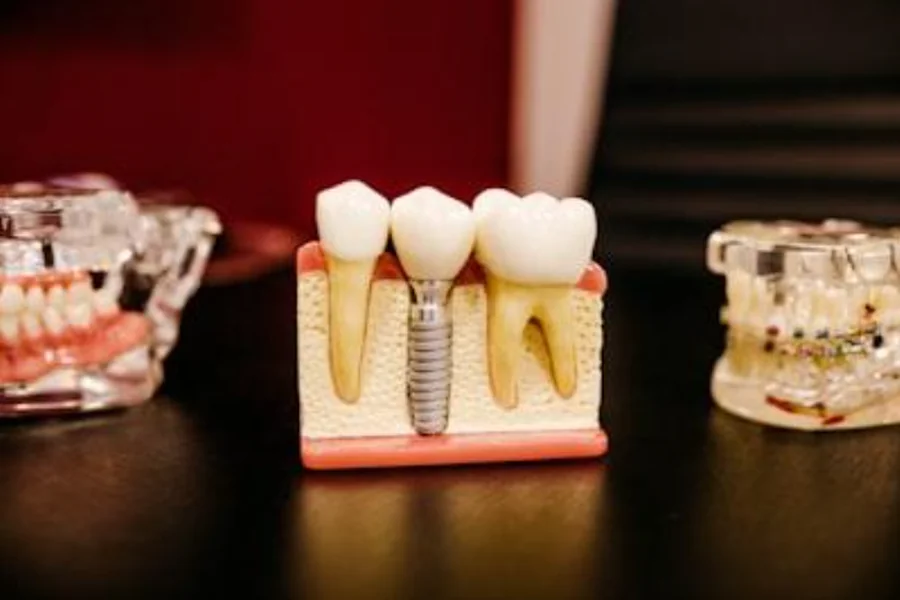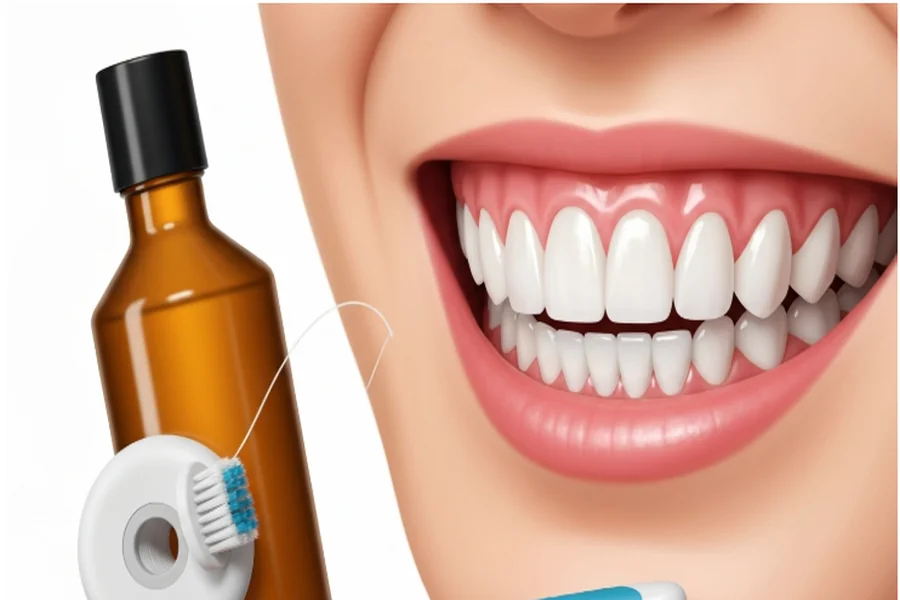Introduction
A healthy smile requires knowing your options and committing to oral care. Modern dentistry offers solutions from straightening teeth to saving damaged ones. If you’re considering orthodontic treatment, this guide covers ceramic braces—a discreet choice available in major cities like Sydney and Melbourne—and explains key procedures like root canals, helping you make informed decisions for your smile.
Understanding Oral Care Essentials
Good oral care is vital for overall health. It protects teeth, gums, and your mouth for life. Neglecting it can cause pain and expensive treatments.
Regular check-ups and daily routines prevent decay and gum disease. Here are essential oral hygiene tips and common dental issues.
Key Components of a Healthy Oral Hygiene Routine
A solid oral hygiene routine is your first line of defense in maintaining your oral health. It’s a simple but powerful way to protect your natural teeth and prevent complex dental issues down the road. Consistency is the most critical factor here. In addition to maintaining a healthy oral hygiene routine, it’s interesting to note how dental technology has evolved, particularly with ceramic braces. Ceramic braces were first introduced in the 1980s as a less-visible alternative to traditional metal braces, offering both durability and aesthetic appeal. Looking ahead, the future of ceramic braces technology promises even more advances, such as stronger, more stain-resistant materials and improved design for greater comfort and effectiveness, all supporting better oral health outcomes.
What does a great routine look like? It doesn’t have to be complicated. The goal is to remove plaque and food particles effectively every day. Your dentist can help you create a treatment plan that addresses your specific needs, but the daily work is up to you. For good oral health, focus on these core habits:
- Brushing at least twice a day with fluoride toothpaste.
- Flossing daily to clean between teeth where a brush can’t reach.
- Limiting sugary foods and drinks that contribute to decay.
- Visiting your dentist for regular check-ups and professional cleanings.
Ultimately, this proactive approach ensures your smile stays healthy and beautiful. When considering orthodontic work, your orthodontist will discuss how different types of braces, like ceramic or metal, fit into your lifestyle and oral hygiene capabilities, outlining the pros and cons of each to find the best option for you.
Common Oral Health Problems and Their Causes
Even with a decent routine, dental issues can sometimes develop. Understanding the common problems and their causes can help you spot warning signs early. Many issues stem from the buildup of plaque—a sticky film of bacteria—that forms on your teeth.
When plaque isn’t removed, it can lead to decay, cavities, and gum disease. These problems often start silently, which is why regular dental visits are so important. They allow a professional to catch things you might miss. Lingering food particles inside of the mouth are a primary cause of these issues.
Here are some common signs that you might be developing an oral health problem:
- Severe pain when biting or chewing.
- Swelling in the face, neck, or gums.
- Persistent sensitivity to hot or cold temperatures.
- A loose or discolored tooth.
If you notice any of these symptoms, it’s crucial to see a dentist. They could indicate an infection that might require a root canal to save the tooth.
Ceramic Braces: What You Need to Know
If you’re looking for a way to straighten your teeth without the conspicuous look of traditional braces, ceramic braces are an excellent solution. They function much like metal braces but are designed to be far less visible, making them a popular choice, especially among adult patients.
These braces use clear or tooth-colored brackets that blend in with your smile. While options like clear aligners exist, ceramic braces offer more precise control over individual tooth movements, similar to traditional metal braces. They provide a perfect middle ground between effectiveness and aesthetics.
How Ceramic Braces Differ from Metal Braces
The main difference between ceramic and metal braces is their appearance. Metal braces use noticeable stainless steel brackets, while ceramic braces feature clear or tooth-colored brackets that blend with teeth, making them much less visible—a popular choice for adults and teens.
Functionally, both types align teeth using brackets and wires. Ceramic brackets are made from a strong composite material but are less durable than stainless steel.
Here’s a quick comparison:
| Feature | Ceramic Braces | Metal Braces |
| Appearance | Clear or tooth-colored; blends in | Shiny stainless steel; noticeable |
| Material | Composite ceramic | High-grade stainless steel |
| Discretion | High—less visible | Low—highly visible |
| Staining | Brackets don’t stain; ties may | Brackets don’t stain; colored ties available |
Pros and Cons of Choosing Ceramic Braces
Choosing the right braces means weighing pros and cons. Ceramic braces are effective and less noticeable, offering cosmetic appeal. However, they are less durable than metal braces and their elastic ties can stain easily. Ceramic braces may also cost more.
Pros:
- Discreet, aesthetically pleasing
- Effective for most alignment issues
Cons:
- Prone to staining (especially elastic ties)
- Less durable; may extend treatment time
Discuss these factors with your orthodontist to decide if ceramic braces suit your needs.
The Treatment Journey with Ceramic Braces
Starting orthodontic treatment with ceramic braces is an exciting step toward a healthier, more confident smile. Guided by a personalized plan, the process begins with a consultation and ends with your newly aligned teeth.
Ceramic brackets are attached to your teeth and connected by thin metal wires and elastic bands. Together, they gently and consistently move your teeth into position over time.
Stages of Orthodontic Treatment and What to Expect
Orthodontic treatment follows a structured process for safe, effective results. Treatment duration varies based on individual needs, but your orthodontist will provide a clear timeline.
The process includes:
- Initial Consultation: Assessment and discussion of goals.
- Braces Placement: Ceramic brackets and wires fitted.
- Regular Adjustments: Visits every 6–8 weeks for tightening or changes.
- Removal and Retention: Braces are removed; retainers maintain alignment.
This approach ensures optimal results, especially for younger patients.
Tips for Managing Discomfort and Maintenance During Treatment
Mild discomfort after getting braces or following adjustments is normal and means your teeth are moving. This tenderness usually fades in a few days and can be managed easily.
Follow your orthodontist’s instructions on diet and brace care to keep treatment on track. Pay special attention to cleaning to remove trapped food.
Tips for comfort:
- Eat soft foods for a few days after adjustments.
- Use over-the-counter pain relief as advised.
- Apply orthodontic wax to any irritating brackets or wires.
- Maintain excellent oral hygiene.
Staying diligent will make your treatment smoother and help you achieve a great smile.
Oral Care with Ceramic Braces and After Root Canal Treatment
Oral care is crucial, especially with ceramic braces or after a root canal. Braces create areas where plaque and food can accumulate, increasing the risk of staining and decay. After a root canal, proper care helps the tooth heal and stay strong. Consistent hygiene ensures lasting oral health and a confident smile.
Proper Cleaning Techniques to Prevent Staining and Decay
Ceramic braces are stain-resistant, but the clear or white rubber bands can discolor easily. Proper cleaning and mindful eating are essential.
To prevent staining:
- Brush after every meal, focusing on brackets and gumline.
- Use interdental brushes or a water flosser for hard-to-reach spots.
- Limit coffee, tea, red wine, and other staining foods.
- Avoid hard and sticky foods that can damage braces.
Special Oral Hygiene Considerations After a Root Canal

A root canal treatment saves your natural tooth and supports long-term oral health. After the procedure, some tenderness in the tooth and jaw is normal and temporary.
Follow your dentist’s recovery instructions closely for the best results. The treated tooth may feel different at first but should return to normal soon. Extra care during healing is important.
Key post-root canal care tips:
- Avoid chewing on the treated tooth until it’s restored with a crown or filling.
- Gently brush and floss around the area to keep it clean.
- Take pain relievers as directed if needed.
- Contact your dentist if you have severe pain or pressure lasting more than a few days.
Conclusion
Maintaining oral health is crucial, especially with options like ceramic braces or treatments such as root canals. Proper cleaning, mindful eating, and following recommended care help you achieve a healthy smile and improve overall well-being. For questions or guidance on optimal oral health, feel free to reach out.
Frequently Asked Questions
Are ceramic braces and clear braces the same thing?
While often used interchangeably, “ceramic braces” and “clear braces” can mean different things. Ceramic braces use clear brackets but function like metal braces. The term “clear braces” can also refer to clear aligners, which are removable trays. The key difference is that ceramic braces are fixed, while clear aligners are not.
How can I keep my ceramic braces from staining?
To prevent staining, maintain excellent oral hygiene by brushing after every meal. The clear brackets themselves are stain-resistant, but the elastic ties are not. Avoid or limit staining foods and drinks like coffee, tea, and red wine. Proper cleaning is the best way to keep them looking great.
How long does treatment with ceramic braces usually take?
The treatment time with ceramic braces varies for each person. The length of treatment depends on the complexity of your case and your specific orthodontic needs. On average, it can take anywhere from 18 to 36 months. Your orthodontist will provide a personalized treatment plan with a specific amount of time.






